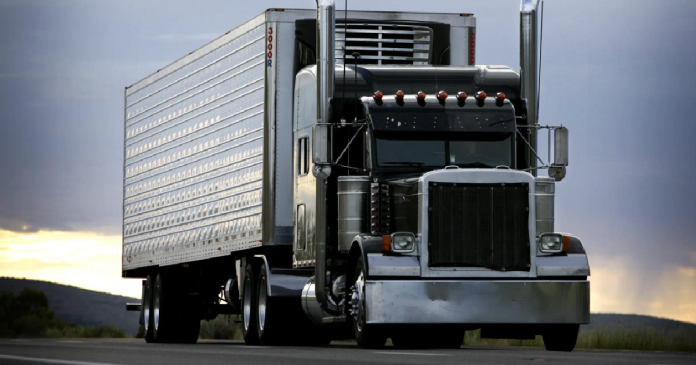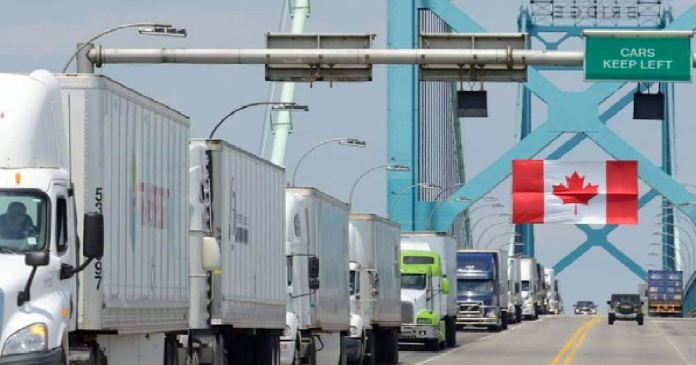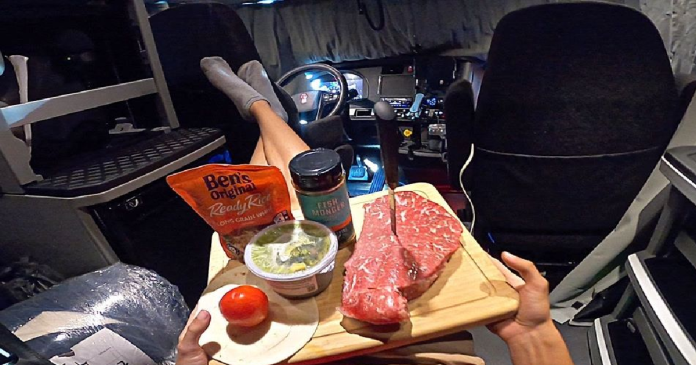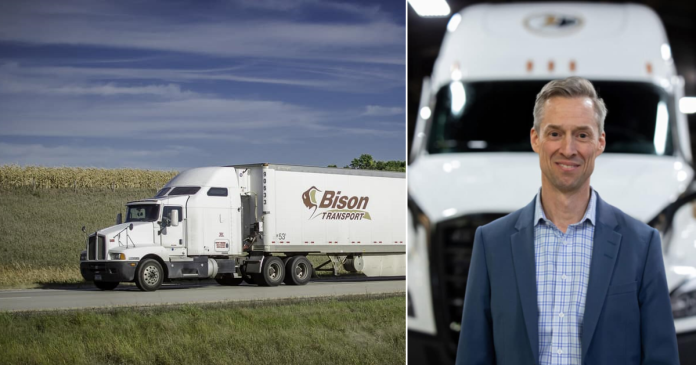Controversial “Driver Inc” Model in the Trucking Industry | In the transportation sector, an increasingly common practice is raising concerns: the hiring of drivers under an incorporated status, colloquially known as “incorporated drivers.” This trend, visible on recruitment platforms, allows transportation companies to bypass certain social charges, thereby enabling them to offer competitive rates. However, this strategy is not without its consequences.
The Nuances of Incorporation
Incorporated drivers are workers who, although they do not own their equipment, provide their services exclusively to one company. In other words, they are paid as suppliers or subcontractors. The company does not directly compensate the individual, but rather their legal entity—the corporation.
Unlike traditional entrepreneurs, such as couriers, these drivers operate trucks owned by the company’s fleet, often identifiable by the company’s logo. However, they do not receive the social protections and benefits typically afforded to salaried employees, such as workers’ compensation or paid leave. Instead, they receive a higher salary due to the absence of these deductions. They lack insurance coverage (medical, vision, dental, therapy, etc.), vacation time, salary agreements, or collective bargaining.
Financial and Social Responsibilities of Incorporated Drivers
Incorporated drivers bear the responsibility for their social benefits and financial security. In the event of illness, they have access to basic healthcare through provincial health insurance but must obtain private insurance for comprehensive coverage, as they lack the protections offered to employees. They may also voluntarily contribute to provincial plans or employment insurance, depending on their eligibility.
For tax purposes, they declare their income as a sole proprietorship, which allows them to deduct certain professional expenses. They must also manage their own retirement planning. Not contributing to these plans can result in short-term savings but poses long-term financial risks if illness occurs without adequate coverage.
Pierre-Yves McSween, speaking on 98.5 FM, has described the incorporated drivers model as a perversion of the industry, highlighting the risks associated with not contributing to the Québec Pension Plan (QPP): “I’m going to create an INC and pay myself in dividends to avoid paying the QPP twice: the employer’s and the employee’s share. But when you pay yourself in dividends, you don’t accumulate QPP! And QPP is not a tax! It’s the Retirement Board, your Quebec retirement plan!”
Moreover, incorporated drivers must bear the costs of an accountant, file a business income tax return and a personal income tax return. They must register for taxes and manage their contracts, sometimes waiting up to 60 days to get paid as suppliers.
These drivers alone bear the financial and social risks of their activity, making them vulnerable in times of economic slowdown or illness. The need to maintain their income may compel them to work beyond their limits, thereby increasing the risks to their health and safety.
Economic and Social Consequences
This model presents significant challenges for society, particularly by contributing to the precarization of labor and the erosion of social protection. This can lead to increased economic insecurity and negative impacts on workers’ health and well-being.
The lack of adequate coverage can make drivers hesitant to seek medical care when ill, increasing the burden on the public healthcare system. Furthermore, the state may face additional costs in terms of social assistance and healthcare if drivers lack sufficient protections.
The Québec Trucking Association (ACQ) estimates that this model has resulted in a loss of nearly 2 billion dollars in social contributions for the Québec state over the last decade. This loss is due to the reduced social contributions made by incorporated drivers compared to salaried employees, affecting the funding of social protection programs. Social contributions are a crucial source of funding for programs such as retirement pensions, health insurance, and unemployment benefits. Their reduction can therefore affect the quality and sustainability of services offered to the population in the long term.
Finally, this practice creates unfair competition against companies that adhere to the rules, allowing some to bid at lower prices on tenders. It is crucial that authorities regulate this practice to preserve the balance between economic flexibility and social protection.
Reactions from Involved Companies
When contacted for comment on this practice, companies present varied responses. For example, Ilco Transit, mentioned in an ad on Kijiji, initially indicated that the majority of its drivers were incorporated for simplicity reasons. However, following a follow-up, the company nuanced its remarks, stating that the choice to be incorporated or not was up to the driver, and that the company was open to integrating them into the payroll if the market evolved in that direction. Ilco Transit also highlighted the existence of a “gray area” in the classification of employees in the industry, asserting that it offered fair remuneration to its drivers, whether incorporated or salaried.
In its Kijiji ad, the company specifies that it offers a salary of 74 cents per mile to an incorporated driver. In an exchange between the carrier and a journalist from La Presse, Mr. Ileri clarified that the pay rate for a regular salaried employee is around 63 to 64 cents per mile. Yet, according to Pierre-Yves McSween, an incorporated driver must be able to earn between 50% and 70% more to compensate for income losses and costs, a calculation that is far from satisfactory!
On the other hand, Cool ALTS Transport, which operates four tractors, justified the recruitment of incorporated drivers based on the advice of its accountant, who suggested that this method would be easier. The owner of the company, however, expressed his intention to discuss further with his accountant to better understand the details of this practice.
In reality, it is profitable for a company to hire incorporated drivers: no social charges, no pension plan contributions, no vacations to pay, no sick days, no employee with health problems in an assistance program…
Industry and Authority Reactions
Faced with this situation, the Québec Trucking Association (ACQ) and other major industry players are calling for stricter regulation to put an end to what they consider a form of tax fraud. The Québec government, as well as the federal government, are currently examining the issue to possibly adjust the legislative framework and better protect workers’ rights in this sector.
An Industry in Search of Clarification
These reactions highlight the complexity and ambiguity surrounding the issue of incorporated drivers in the transportation sector. Companies seem to navigate a gray area, oscillating between the economic advantages of this model and the legal and ethical uncertainties it raises. The need for regulatory clarification and the standardization of practices thus emerges as a priority to ensure fair competition and the protection of workers’ rights in this critical industry for the economy.
The Importance of Understanding the Stakes
Some incorporated drivers, particularly those who do not fully grasp the financial and legal complexities of this model, risk finding themselves in precarious situations due to inadequate financial management. The lack of understanding of the stakes and responsibilities associated with the status of an incorporated driver can lead them to neglect essential aspects such as retirement planning or adequate insurance coverage. This issue is particularly pronounced among immigrants, who may be less familiar with the Québec and/or Canadian system, and find themselves more vulnerable to abusive practices. They are often the first victims of these business models, suffering exploitation without being aware of it, which underscores the urgency of increased regulation and awareness to protect all workers.
Pierre-Yves McSween, a finance expert, emphasizes the importance of a thorough analysis: “I don’t think that with an INC, you’re making the tax pass of the century. If your RRSP isn’t full, and your TFSA isn’t full, and you think it’s worth paying accountants to do your GST, QST filings, prepare your financial statements, manage your tax planning, handle your remittances, you might end up hiring a subcontractor to handle your own payroll. So, it also costs money! Managing your billing, your collections… Listen up, incorporated drivers. If you’re not able to earn from 50% to 70% more pay to compensate for the losses in income and other costs, you’re making a very bad calculation…”
Conclusion
Although the “incorporated drivers” model may offer some short-term economic benefits, it raises significant questions about fairness, worker protection, and the financial health of the state. It is imperative that authorities take measures to regulate this practice and ensure a fair and safe working environment for all stakeholders in the Québec transportation sector, to prevent any situation where a worker might be exploited or manipulated into a scheme that is detrimental to them.























